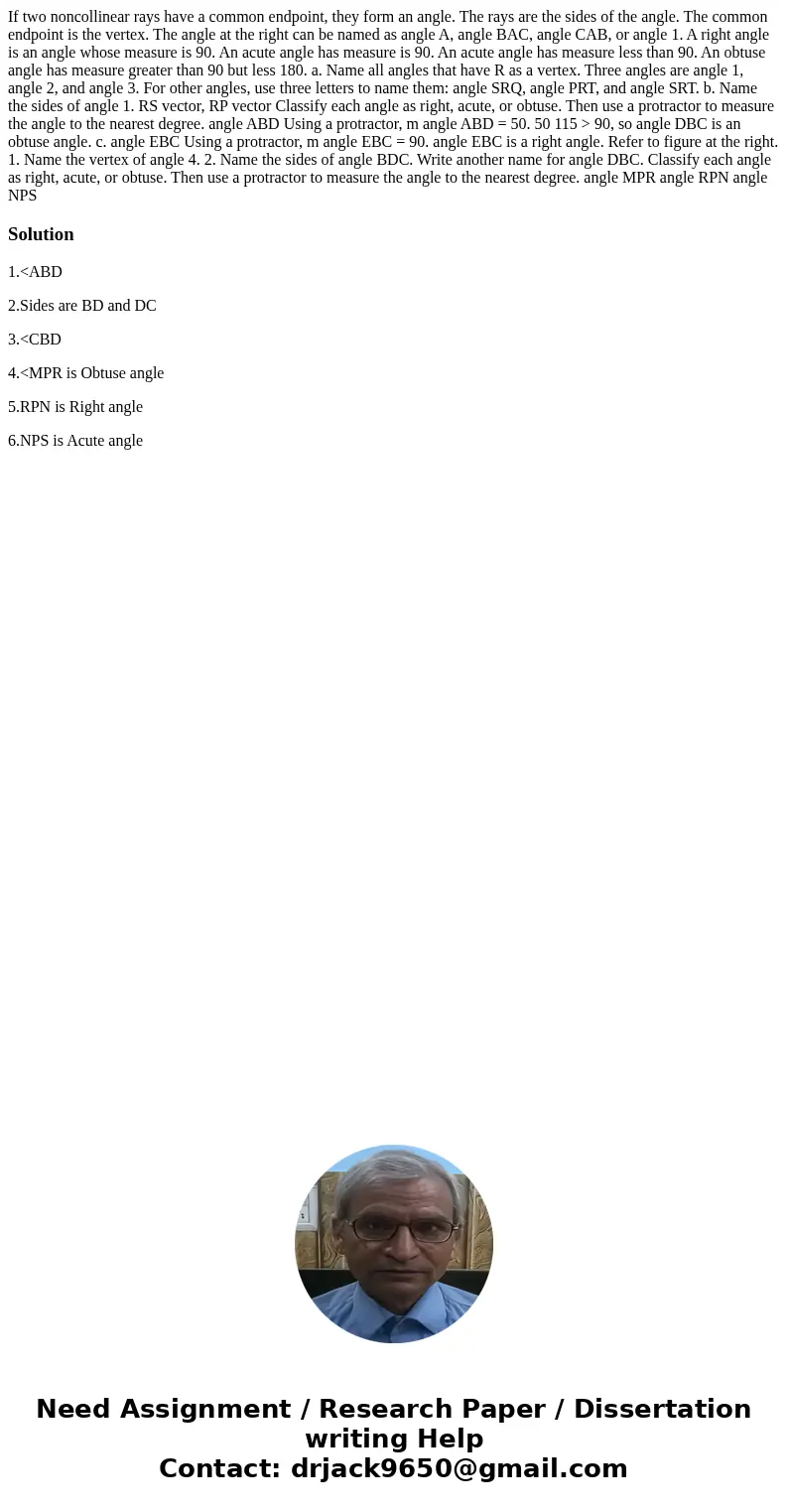If two noncollinear rays have a common endpoint they form an
If two noncollinear rays have a common endpoint, they form an angle. The rays are the sides of the angle. The common endpoint is the vertex. The angle at the right can be named as angle A, angle BAC, angle CAB, or angle 1. A right angle is an angle whose measure is 90. An acute angle has measure is 90. An acute angle has measure less than 90. An obtuse angle has measure greater than 90 but less 180. a. Name all angles that have R as a vertex. Three angles are angle 1, angle 2, and angle 3. For other angles, use three letters to name them: angle SRQ, angle PRT, and angle SRT. b. Name the sides of angle 1. RS vector, RP vector Classify each angle as right, acute, or obtuse. Then use a protractor to measure the angle to the nearest degree. angle ABD Using a protractor, m angle ABD = 50. 50 115 > 90, so angle DBC is an obtuse angle. c. angle EBC Using a protractor, m angle EBC = 90. angle EBC is a right angle. Refer to figure at the right. 1. Name the vertex of angle 4. 2. Name the sides of angle BDC. Write another name for angle DBC. Classify each angle as right, acute, or obtuse. Then use a protractor to measure the angle to the nearest degree. angle MPR angle RPN angle NPS 
Solution
1.<ABD
2.Sides are BD and DC
3.<CBD
4.<MPR is Obtuse angle
5.RPN is Right angle
6.NPS is Acute angle

 Homework Sourse
Homework Sourse